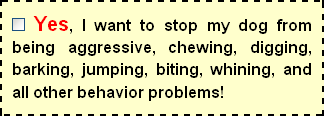
Boxer Dogs are born clowns, with strong, agile builds.
Boxer Dogs love to please, and enjoy learning and performing tricks that stimulate their mental and physical capabilities. Consider your Boxer Dog a life long learner, and take advantage of trick training as a way to keep your dog from inventing its own tricks to play on you!
Like other types of training, trick training requires a great deal of patience, and frequent and lavish rewards for the right behaviors. Boxer Dogs sometimes lose focus or become bored with tasks they find uninteresting. It helps to chose tricks your Boxer Dog will find fun to perform. Teach the focus command prior to trick training, as well as basic obedience skills the tricks are based on. Train only one trick at a time, starting with easy ones, and pace your training to your Boxer Dogss learning pace.
Shake hands, dance, and fetch are easy beginner tricks particularly suited to Boxer Dogs. They will help build up your Boxer Dogs confidence and skill quickly. Once they are mastered, look for other ways to combine and modify these basic fundamentals into more complex tricks.
To teach your Boxer Dog to shake hands, begin in the sit position and get its attention with the focus command. Gently pick up your Boxer Dogs paw with one hand while giving a treat with the other. Praise lavishly whenever your Boxer Dog raises its paw on command and receives its treat. Repeat, and see how fast your Boxer Dog learns! Try teaching your Boxer Dog to wave and hide it's face with its paw once shake hands is mastered. You can even train your Boxer Dog to turn light switches on and off with the same basic technique.
Dance is a simple trick based on the sit position. Begin by holding a treat above your Boxer Dog's nose until it jumps up on its hind legs. Say dance, and give the toy to the dog while gently taking hold of its front legs. dance together with your Boxer Dog at first, guiding it by holding its front legs while it stands balanced on its rear ones. Do not pull or force your dog to stay in the standing position, simply reward the behavior as it occurs naturally. Eventually, see if your Boxer Dog can perform the trick on its own. Then, try teaching beg by encouraging your Boxer Dog to sit while you support its front legs.
Fetch is best trained initially on a long lead. Once focused, toss your Boxer Dogs favorite toy a few feet away. Say fetch while your dog runs or jumps to the toy. Praise it after the toy is picked up, then once again when your Boxer Dog brings it to you for further play. Wait for the toy to be dropped, and praise and reward once again. Once fetch is accomplished, you can move on to frisbee, as well as teaching your Boxer Dog to play Hide and Seek with specific toys it can learn to identify by name.




 Your boxer dog communication doesn't include the ability to speak English. Take the word "no," for example. Does your dog speak English? Not understand English. Does she speak it? What's meaningful to her is your tone of voice, not the word itself. Now let's think about that - we're taking up excess time trying to teach our dog a word she'll never speak and that probably doesn't mean much to her anyway. Sure, it's meaningful to us, but that's only one side of the equation. What about something that's meaningful to both human and dog?
Your boxer dog communication doesn't include the ability to speak English. Take the word "no," for example. Does your dog speak English? Not understand English. Does she speak it? What's meaningful to her is your tone of voice, not the word itself. Now let's think about that - we're taking up excess time trying to teach our dog a word she'll never speak and that probably doesn't mean much to her anyway. Sure, it's meaningful to us, but that's only one side of the equation. What about something that's meaningful to both human and dog?